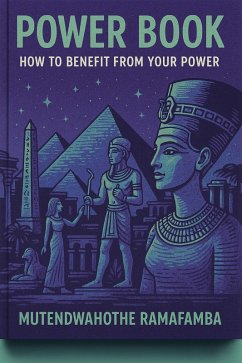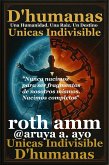In The Book of Power, Mutendwahothe Ramafamba, an esteemed author, entrepreneur, economics specialist, and behavior expert, delivers a masterful exploration of power in its many dimensions-social, personal, active, and passive. This transformative book serves as both a theoretical guide and a practical roadmap for anyone seeking to understand, harness, and apply power to achieve wealth, influence, and societal change. Through a rich tapestry of historical and contemporary examples, Ramafamba demystifies power, revealing its universal presence and potential to shape lives, communities, and nations.
Chapter 1: Understanding Power introduces power as the ability to influence behavior, resources, or outcomes across all spheres of life-politics, economics, culture, and personal relationships. Neither inherently good nor evil, power's impact hinges on its wielder's intent, as seen in Mahatma Gandhi's nonviolent leadership for India's independence or Adolf Hitler's destructive regime. The chapter outlines leadership styles-authoritative, transformational, collaborative-and examines how power is gained through wealth, innovation, or crises (e.g., Jeff Bezos' Amazon empire) and lost through corruption or irrelevance (e.g., Kodak's decline).
Chapter 2: Social Power explores power embedded in collective systems, enduring beyond individual lifespans. Ramafamba details ten forms: political (e.g., Nelson Mandela's democratic reforms), social structure etc
Chapter 3: Personal Power shifts focus to individual influence, highlighting ten dimensions: intelligence (e.g., Albert Einstein's scientific breakthroughs), family background (e.g., Kennedy family legacy), talent (e.g., Bob Marley's cultural impact), sports excellence (e.g., Serena Williams' global influence), education (e.g., Malala Yousafzai's advocacy), gender (e.g., Oprah Winfrey's media empire), work position (e.g., Elon Musk's CEO authority), spiritual (e.g., Desmond Tutu's moral leadership), supernatural (e.g., shamans' cultural roles), and networking (e.g., LinkedIn's professional connections). This chapter empowers readers to identify and cultivate their unique strengths for personal and societal impact.
Chapter 4: Active and Passive Power contrasts direct, decisive influence with subtle, patient authority. Active power, exemplified by Winston Churchill's wartime leadership, drives immediate change but risks resistance. Passive power, as seen in Gandhi's nonviolent resistance or the Dalai Lama's spiritual presence, builds influence over time with minimal conflict. Ramafamba analyzes their advantages and drawbacks, urging readers to balance both for effective leadership.
Chapter 5: Using Power for Wealth, Influence, and Transformation provides actionable strategies for applying power. Readers learn to create wealth (e.g., Warren Buffett's investments), expand influence (e.g., Martin Luther King Jr.'s civil rights advocacy), and transform communities or nations (e.g., Lee Kuan Yew's Singapore).
Chapter 6: Conclusion - The True Essence of Power synthesizes the book's insights, portraying power as a dynamic, universal force requiring discipline and responsibility.
The Book of Power is a compelling guide for leaders, entrepreneurs, and individuals seeking to navigate power's complexities. Its global examples-from Shaka Zulu to Silicon Valley-ensure broad relevance, while its practical advice empowers readers to effect change. Whether you aim to build wealth, influence culture, or transform society, this book offers the wisdom to wield power responsibly and create a legacy of impact. Available now, it is a must-read for anyone ready to unlock their potential and shape a better future.
Dieser Download kann aus rechtlichen Gründen nur mit Rechnungsadresse in A, B, CY, CZ, D, DK, EW, E, FIN, F, GR, H, IRL, I, LT, L, LR, M, NL, PL, P, R, S, SLO, SK ausgeliefert werden.









